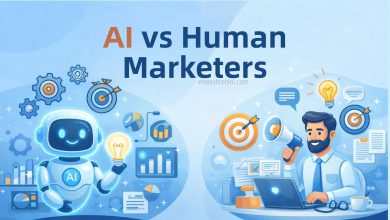CDP vs DMP in Digital Marketing – Comprehensive Guide 2023
CDP vs DMP – Full Details :
In today’s digital age, data plays a crucial role in driving successful marketing strategies. Businesses strive to understand their customers better and deliver personalized experiences. Customer Data Platforms (CDPs) and Data Management Platforms (DMPs) have emerged as powerful tools to harness and leverage customer data effectively. This essay aims to explore the key differences between CDPs and DMPs and their roles in digital marketing, highlighting their unique functionalities, benefits, and their implications on marketing strategies.
1. Understanding Customer Data Platform (CDP):
Customer Data Platforms (CDPs) are comprehensive systems that collect, organize, and manage customer data from various sources. CDPs focus on creating a unified and persistent customer profile, consolidating data from multiple touchpoints, including websites, mobile apps, CRM systems, social media, and offline interactions. CDPs enable marketers to gain a holistic view of each customer, track their behavior, preferences, and interactions, and segment them into targetable groups.
Also Read…. Scope of Digital Marketing in the Online Education System
2. Exploring Data Management Platform (DMP):
Data Management Platforms (DMPs) are designed to aggregate and analyze large volumes of anonymous, third-party data from multiple sources. DMPs primarily serve as data marketplaces, offering marketers access to vast datasets for audience segmentation and targeting. DMPs collect data from various online sources such as publishers, advertising networks, and ad exchanges, and apply advanced algorithms to categorize users into specific audience segments for targeted advertising.
3. Key Differences: CDP vs DMP
a. Data Sources and Usage: CDPs primarily collect and integrate first-party customer data obtained from owned channels and touchpoints, allowing businesses to build personalized relationships with their customers. In contrast, DMPs primarily focus on third-party data sources, providing marketers with insights into broader audience behavior and interests for targeted advertising campaigns.
b. Data Persistence and Individual-Level Insights: CDPs emphasize the creation of unified customer profiles that persist over time, enabling marketers to track individual-level interactions and preferences comprehensively. On the other hand, DMPs prioritize real-time analysis of large-scale anonymous data sets to generate aggregate insights and audience segments, lacking individual-level visibility.
c. Customer Engagement vs. Advertising Optimization: CDPs excel in optimizing customer engagement by delivering personalized experiences across various marketing channels. They enable marketers to orchestrate tailored campaigns, automate marketing workflows, and personalize content, enhancing customer loyalty and driving revenue growth. DMPs, however, focus on optimizing advertising campaigns by providing granular audience segments to advertisers, facilitating targeted ad placements and increasing advertising efficiency.
d. Data Privacy and Compliance: CDPs concentrate on collecting and managing first-party customer data, often obtained with explicit consent and governed by privacy regulations. As such, CDPs prioritize data privacy and compliance measures to safeguard customer information. DMPs, dealing primarily with third-party data, face challenges in ensuring compliance with privacy regulations, especially in the context of cookies and tracking technologies.
4. Implications on Marketing Strategies: CDP vs DMP
a. Personalization and Customer Experience: CDPs empower marketers to deliver personalized experiences at scale, enabling targeted messaging, tailored recommendations, and individualized offers. By utilizing a comprehensive customer view, businesses can create relevant and meaningful interactions, fostering customer loyalty and driving conversions.
b. Advertising Efficiency and Audience Targeting: DMPs offer valuable insights into audience behavior, enabling marketers to target specific segments with relevant advertisements. By leveraging data from multiple sources, DMPs enhance ad personalization, optimize ad placements, and improve campaign ROI. Advertisers can reach the right audience, reduce wasted ad spend, and improve conversion rates.
c. Data Governance and Compliance: Both CDP vs DMP need to prioritize data governance and compliance to meet regulatory requirements and build customer trust. Implementing robust security measures, obtaining proper consent, and adhering to data protection regulations are essential for maintaining the integrity of customer data and ensuring ethical data practices.
Conclusion: CDP vs DMP
In the realm of digital marketing, both CDPs and DMPs play critical roles in harnessing customer data. CDPs focus on building comprehensive customer profiles and driving personalized engagement, while DMPs excel in aggregating third-party data and optimizing advertising campaigns. By understanding the unique functionalities and implications of CDPs and DMPs, businesses can make informed decisions when selecting the right platform(s) to support their marketing objectives. Leveraging the power of data effectively, organizations can cultivate stronger customer relationships, deliver tailored experiences, and drive business growth in the dynamic digital landscape.
Also Read : ⤵️
Keywords : CDP vs DMP



